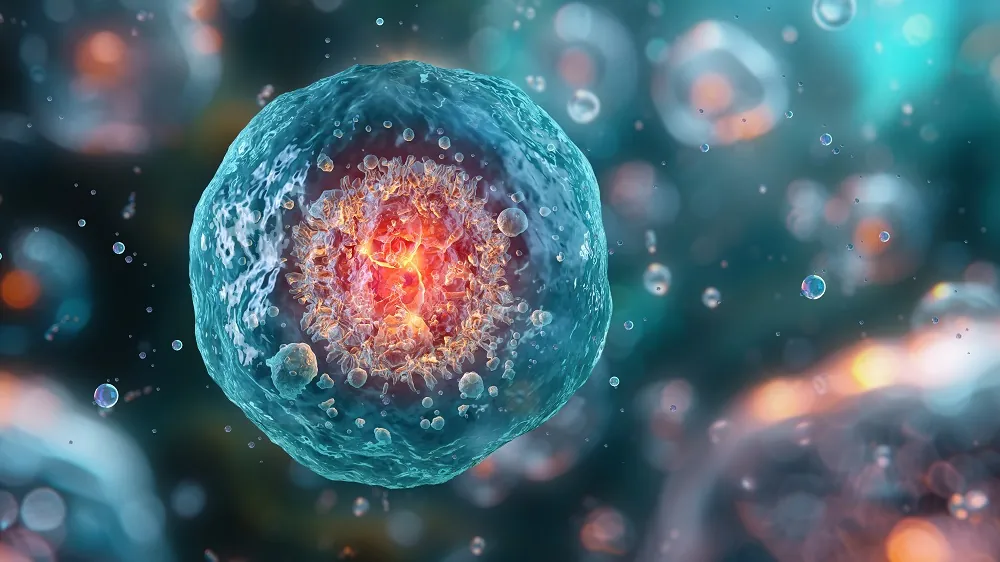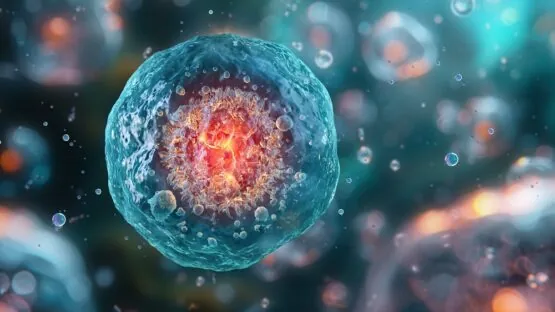In a new study, the researchers administered human umbilical cord-derived mesenchymal stem cells (HUCMSCs) to aged mice and observed reduced degeneration in multiple organs, changes to microbial composition, metabolic alterations, improvements in behavior and ability, and reduced fearfulness [1].
Therapeutic potential
Earlier this year, we reported on a clinical trial in which administering HUCMSCs reduced frailty in older people. MSCs in general are known for their capacity for self-renewal and differentiation into multiple cell types. A growing body of research suggests that MSCs can be used as a tool for therapeutic purposes [2].
In this new study, the researchers used four-month-old mice of two different strains, senescence-accelerated mouse prone 8 (SAMP8), a mouse strain used as a model of age-related cognitive decline and, as a control, senescence-accelerated mouse resistant 1 (SAMR1), a strain that ages normally.
A group of 15 SAMP8 mice received HUCMSCs weekly for eight weeks. Additionally, researchers had SAMP8 and SAMR1 groups that didn’t receive HUCMSCs as a control. One week following the end of the experiment, the researchers took fecal and blood samples from now 6-month-old mice.
Improvements on many levels
Following MSC administration, the researchers tested the mice’s cognitive abilities. They observed increased curiosity, better motor coordination and balance, and reduced anxiety in mice treated with HUCMSCs compared to controls. However, there were no differences in a test that assessed spatial learning and memory.
On the molecular level, the researchers analyzed the genome for DNA single-strand breaks in the brain tissue. They performed additional analysis to specifically focus on exonic regions (DNA sections translated into proteins) and within 200 bp of transcription start sites (where many elements that regulate translation – the first step in protein production – are located).
Unsurprisingly, they noted more single-strand breaks in the faster-aging SAMP8 control mice compared to the SAMR1 controls. MSCs-treated mice fared better than their counterparts in the SAMP8 untreated controls regarding single-strand DNA breaks, but there were no significant differences between SAMP8 MSCs-treated and untreated SAMR1.
Together, this suggests that MSCs reduce age-related DNA damage, preserving genomic stability and neuroprotection, which the researchers hypothesized to play a role in improving cognitive function.
On the tissue level, MSC treatment led to significant improvements. For example, in the frontal lobe and hippocampal brain regions, which are responsible for learning, memory, and attention, the researchers observed “maintained structural integrity and normal glial cell distribution” in the mice treated with MSCs.
The cardiac tissue of the MSC-treated SAMP8 mice resembled that of the healthy cardiac tissue of the SAMR1 controls. The structures of the gastrointestinal, kidney, skeletal muscle, spleen, liver, and lung cells were also well-preserved, while controls exhibited more aging-related changes. The researchers also observed reduced inflammation in the lungs and spleens of MSC-treated mice compared to the control animals.
The authors emphasize that in some tissues (kidney, muscle, and spleen), the tissues of mice treated with MSCs surpassed that of controls, suggesting tissue rejuvenation properties of MSC treatment and its potential for regenerative medicine.
The impact on microbiota and metabolism
MSC treatment also resulted in changes to the mice’s microflora and metabolic profiles. While all three groups of mice share some microbial species in their guts, there were also significant differences.
For example, the researchers noted that following the MSC treatment, some bacterial species that are considered beneficial in humans were restored. On the metabolomic level, they noted that MSC treatment “increased levels of metabolites beneficial for cardiovascular health.”
The authors also linked the increased levels of one of the metabolites, namely 5-hydroxy-L-tryptophan, in MSC-treated mice to the reduced depression-like behavior that they observed in previous experiments. They suggest that an increase in this compound leads to the normalization of serotonin synthesis, a process linked to antidepressant properties.
More broadly, the researchers observed differences between experimental groups regarding a few metabolite pathways, including pathways related to fatty acid and amino acid metabolism, suggesting that MSC therapy has an impact on metabolism.
However, this impact was quite complex, and the authors pointed to both benefits and limitations of MSC treatment on the metabolome. They noticed that several metabolites exhibited changes in accordance with what would be expected, based on the previous research, which highlighted the benefits of MSC treatment on metabolic changes. However, researchers also noted some observations conflicted with those expectations suggesting MSC treatment has some limitations regarding its impact on metabolic changes. Those results need further investigation.
Understanding the mechanism
While investigating the molecular mechanism of MSC treatment still needs more investigation, the authors suggest that, based on these results and previous research, some possible molecular pathways that are in play. They also suggest that MSCs’ anti-inflammatory properties promote DNA damage-repair cycles, leading to reduced DNA damage in the brain. They point to the critical role of metabolism, which should be further investigated.
In these experiments, the researchers use intraperitoneal injection (IP), and not intravenous infusion, as preclinical studies have shown IP of MSCs as more effective in treating colitis [3]. Previous research suggests that IP-administered MSCs impact intestinal immune and inflammatory responses [4]. These researchers hypothesize that MSCs alter gut microbiota through modulation of intestinal immune function and microenvironment. A changed microbiome subsequently impacts metabolism and immune functions, resulting in a positive feedback loop. However, there is still a need to fully understand the mechanism by which MSCs influence gut microbiota.
This study has several limitations, one of which is sampling for microbiome analysis. Since samples were taken at a single time point, the researchers might have missed dynamic and long-term changes in the microbiome, factors important for potential use in therapies. Second, SAMP8/SAMR1 was used as a model for aging and dementia; however, those animals have some pathological features that are different from human dementia, which might impact how the results will translate to human research. Also, having more animals would have increased the statistical strength of these results.
Literature
[1] Lian, J., Xia, L., Wang, G., Wu, W., Yi, P., Li, M., Su, X., Chen, Y., Li, X., Dou, F., & Wang, Z. (2024). Multi-omics evaluation of clinical-grade human umbilical cord-derived mesenchymal stem cells in synergistic improvement of aging related disorders in a senescence-accelerated mouse model. Stem cell research & therapy, 15(1), 383.
[2] Musiał-Wysocka, A., Kot, M., & Majka, M. (2019). The Pros and Cons of Mesenchymal Stem Cell-Based Therapies. Cell transplantation, 28(7), 801–812.
[3] Wang, M., Liang, C., Hu, H., Zhou, L., Xu, B., Wang, X., Han, Y., Nie, Y., Jia, S., Liang, J., & Wu, K. (2016). Intraperitoneal injection (IP), Intravenous injection (IV) or anal injection (AI)? Best way for mesenchymal stem cells transplantation for colitis. Scientific reports, 6, 30696.
[4] Sala, E., Genua, M., Petti, L., Anselmo, A., Arena, V., Cibella, J., Zanotti, L., D’Alessio, S., Scaldaferri, F., Luca, G., Arato, I., Calafiore, R., Sgambato, A., Rutella, S., Locati, M., Danese, S., & Vetrano, S. (2015). Mesenchymal Stem Cells Reduce Colitis in Mice via Release of TSG6, Independently of Their Localization to the Intestine. Gastroenterology, 149(1), 163–176.e20.



